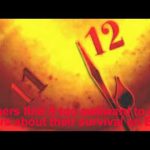JFK Assassination: History as a True-Crime Story – Lee Harvey Oswald (2013)
John Fitzgerald Kennedy, the 35th President of the United States, was assassinated at 12:30 p.m. Central Standard Time (18:30 UTC) on Friday, November 22, 1963, in Dealey Plaza, Dallas, Texas.[1][2] Kennedy was fatally shot by a sniper while traveling with his wife Jacqueline, Texas Governor John Connally, and Connally’s wife Nellie, in a presidential motorcade. A ten-month investigation from November 1963 to September 1964 by the Warren Commission concluded that Kennedy was assassinated by Lee Harvey Oswald, acting alone, and that Jack Ruby also acted alone when he killed Oswald before he could stand trial.[3]
Although the Commission’s conclusions were initially supported by a majority of the American public,[4] polls conducted between 1966 and 2003 found that as many as 80 percent of Americans have suspected that there was a plot or cover-up.[5][6] A 1998 CBS News poll showed that 76% of Americans believed the President had been killed as the result of a conspiracy.[7] A 2013 AP poll showed, that although the percentage had fallen, more than 59% of those polled still believed that more than one person was involved in the President’s murder.[8][9] A Gallup Poll in mid-November 2013 showed 61% believed in a conspiracy and 30% thought Oswald did it alone.[10]
In contrast to the conclusions of the Warren Commission, the United States House Select Committee on Assassinations (HSCA) concluded in 1978 that Kennedy was probably assassinated as a result of a conspiracy.[11] The HSCA found the original FBI investigation and the Warren Commission Report to be seriously flawed. While agreeing with the Commission that Oswald fired all the shots which caused the wounds to Kennedy and Connally, the HSCA stated that there were at least four shots fired (only three of which could be linked to Oswald) and that there was “…a high probability that two gunmen fired at [the] President.”[12][13]
The HSCA did not identify any other person or group involved in the assassination besides Oswald, but they did specifically say the CIA, the Soviet Union, organized crime, and several other groups were not involved, although they could not rule out the involvement of individual members of those groups. Kennedy’s assassination is still the subject of widespread debate and has spawned numerous conspiracy theories and alternative scenarios.
Numerous books, television shows and articles continued to appear. Writing in 2007, Vincent Bugliosi said, “close to one thousand books” had been published on the subject of the assassination,[164] of which “over 95 percent” were pro-conspiracy.[165] Some notable books to 1990 were Anthony Summers’ Conspiracy (later revised and published as Not in Your Lifetime), David Lifton’s best-selling Best Evidence, both published in 1980, and Henry Hurt’s Reasonable Doubt in 1985. The Summers and Hurt books explore many of the prominent conspiracy theories, while Lifton argues that President Kennedy’s wounds were altered before the autopsy to frame Oswald. Jim Marrs published Crossfire in 1989, the same year High Treason, by Robert J. Groden and Harrison Livingstone was published. The latter book argued the autopsy photos were altered to give the appearance that wounds were caused by shots from a single gunman.
By the late 80s, interest in the subject among the general public was waning.[166] One theory for this from writer Pete Hamill was that by 1988, “an entire generation had come to maturity with no memory at all of the Kennedy years.”[167] In 1991, Oliver Stone’s film JFK introduced the subject – and many of the attendant conspiracy theories – to a new generation of Americans. The sudden renewed interest in the assassination led to the passage by Congress of the JFK Records Act in 1992.[166] The Act created the Assassination Records Review Board to implement the Act’s mandate to release all sealed documents related to the assassination. Thousands of documents were released between 1994 and 1998, providing new material for researchers.
To date, there is no consensus on who, among many players, may have been involved in a conspiracy to kill President Kennedy. Those often mentioned as being part of a conspiracy include Jack Ruby, organized crime as an organization or organized crime individuals, the CIA, the FBI, the Secret Service, the KGB, right-wing groups or right-wing individuals, President Lyndon Johnson, pro- or anti-Castro Cubans, the military and/or industrial groups allied with the military.
Leave A Reply
You must be logged in to post a comment.









 Paranormal
Paranormal

